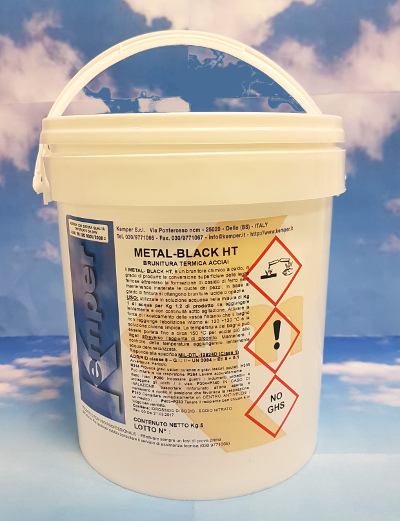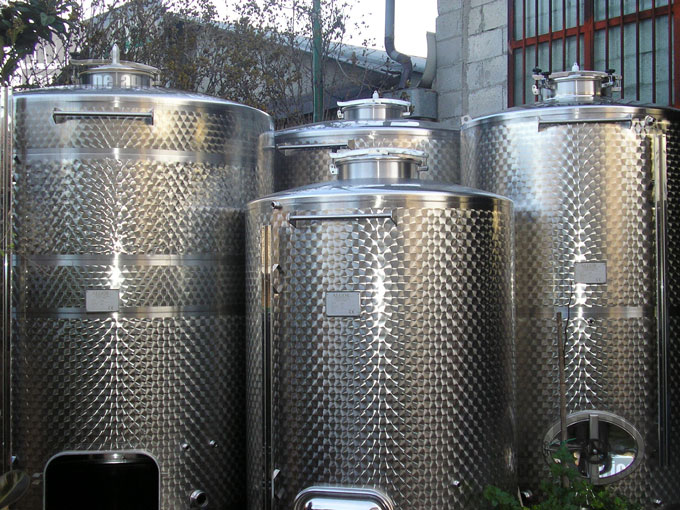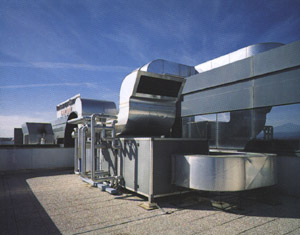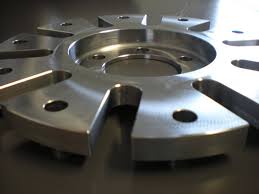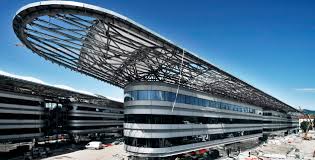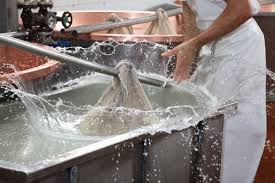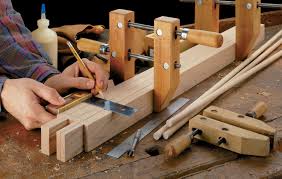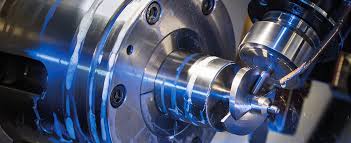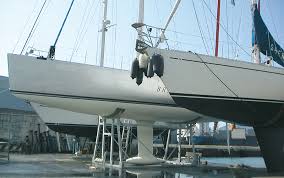FEATURES PDF
METAL- BLACK HT, is a chemical hot burnishing which produces the superficial conversion of ferrous alloys, through the formation of black iron oxide. Following an appropriate subsequent sealing process, it guarantees an average protection against exposure to medium/low environmental corrosion rate: such conversion layer gives a higher protection and adhesion than cold burnishing processes. In addition to protective qualities, METAL- BLACK HT provide functional and visual properties on treated parts, whose surface, assumes a black colour, according to the type of ferrous alloy, the finished surface grade of the part (polished or opaque) and time and temperature of the treatment cycle (Tab.1). Main advantages are:
- Process appropriate to low and medium alloyed steel.
- The possibility to use it on any size parts (from small metal parts to the most important components) and intended to different applications (mechanics, arms, carpentry, aesthetic treatment).
- Depending the finished surface grade of the treated part within the same material, a polished or opaque burnishing can be obtained, giving to the part a different reflective capacity. This option is highly appreciated in the army industry (production and maintenance).
- METAL- BLACK HT keeps unaltered the final sizes of the treated parts, so is highly recommended for those components that do not allow others protective treatments with a higher final thickness.
- METAL- BLACK HT is appropriate to handle small lots, in a controlled manner within the production cycle, and to for who works on the behalf of third parties in large plants.
- METAL- BLACK HT meets the specification MIL-DTL-13924D (Class 1)
HOW TO USE
METAL-BLACK HT is a high concentrated powder product, that must be used in aqueous solution.
1-PREPARATION OF THE BATH. Prepare separately the amount of water needed in the bath in the rate of Kg 1 of water for Kg 1,2 of METAL- BLACK HT. The volume of parts must be taken into consideration as it will raise the level of fluid in the tank. Always consider a volume of at least 20 cm above the surface of the liquid when the tank is filled with the parts. This space must take into account the sketches that will occur during the boiling of the bath and during the demineralized water refill. Add METAL-BLACK HT to the tank, stirring slowly and continuously. When temperature reaches 85 ° C - 95 ° C, activate the heating source of the bath, as long as the bath does not boil, around 120 ÷ 130 ° C and the solution becomes clear.
If the temperature is lower, then add extra product in a controlled manner. The bath temperature can be brought up to about 150 ° C. Higher temperatures are required for higher alloyed steels, while low-alloyed steels require lower bath temperatures. During the process, the bath gets concentrate, due to the evaporation of water and the rise of temperature. Bath temperature can be control by adding demineralised water until the desired temperature is restored. Water adding must be gradual and controlled, as produces, in the spilling point, a vigorous turbulence of the liquid.
At the end of use, remove the heating source and close the tank. By reducing the temperature in the bath, the salts will precipitate. The phenomenon, quite normal, is reversible, heating the bath during next use.
2-SETTING UP THE NEW PIECES.
The treatment is appropriate to finished parts at the end of all technological processes (mechanical machining, plastic deformations, thermal treatments and surface finishing). Parts must be perfectly clean, free from oxidation, residuals of previous workings (lubricating oils, neat oils, protective oils, grease, etc.) and with a hardness not exceeding 40 HRC. If rust traces are present, go to Step 3 first. Carefully clean and degrease the part, using, preferably, an aqueous bath (DERKEMP MAT line if you opt for automatic degreasing, DERKEMP CH for manual operations). Rinse with clean water (better if last step is run with demineralised water). In case the part to be treated is finished without oxidation or residual, it could be also possible to clean it with solvents (Line KEMPERSOLV), making sure of the complete removal of the solvent before proceeding.
3-DISOSSIDATION (if needed) OR PREVIOUS BURNISHING ELIMINATION. Use a deoxidizer bath of METALDEC LIQUID or DESCAL LIGHT (Suitably diluted), for 5-10 minutes (longer bath is needed to remove older burnish). Following step is rinsing and then proceed immediately with the burnishing stage.
4-BURNISHING. Fully immerse the pieces into the bath, which must be at the right boiling temperature, suitable for the different type of materials (between 125 ° C for low alloyed steel, iron, and 140 ° C for high-alloyed steels). Wait the required time (see Tab.1). Intermediate visual inspections are possible by extracting the pieces rapidly, without allowing the drying of the burning salts on the surface of the pieces.
At the end of the cycle, extract the pieces and dip them immediately in a rinsing bath, containing hot water at a temperature of 70 ° C to 80 ° C, preferably demineralized. Temperatures below 50 ° C are not recommended, because the resulting thermal shock can produce undesirable effects on the adhesion of the burnishing.
A hot rinse bath allows faster drying and faster move to the next fixing step. Periodically replace the rinsing water to prevent saline accumulation that may result in whitish stripes on the pieces.
5-FIXING. The fixing allows the sealing of the iron oxide structure anchored to the surface of the items and the final appearance uniformity. It must be done immediately, after the burnishing on a completely dry part. It consists in the treatment with specific protective oil, like PRONEX OIL, very fluid and penetrating (it also meat the specification MIL PRF-81309F) by diving or spraying it for a uniform final appearance. After this treatment, the piece must not be manipulated for at least 12 hours. Other treatments, such as painting, are not recommended.
6-PARTS MAINTENANCE Maintaining the protective properties of the conversion layer is subject to regular restoration with the fixing oil.
7-MAINTENANCE OF THE BATH Keep container tightly closed when not in use. Replacement is necessary as a result of excessive stretching of the burnishing times, strong bath intake and significant presence of sludge which is insoluble at operating temperatures. A partial replacement may be considered case by case.
On our website www.kemper.it, by selecting the product tab, a brief tutorial that illustrates the use of the product is available.
WARNINGS: Use tanks and containers exclusively in stainless steel. Before using, have a look at the 16-points on Safety Data Sheet and use all necessaries DPI (personal protective equipment) in order to protect eyes, face and skin. The product is very caustic.
Table: Material indications and operating conditions
|
Applicable alloys |
Indicative temperatures |
Treatment times |
|
Fe320÷Fe690 |
125°C÷130°C |
5 ÷ 10 min. |
|
13CrMo4-5 |
130°C÷140°C |
15 ÷ 30 min. |
|
38NiCrMo12 |
140°C÷145°C |
15 ÷ 40 min. |
|
Not stainless steel alloyed |
145°C÷150°C |
20 ÷ 60 min. |
PACKAGING
K0044400 METAL-BLACK HT: C1*- C5- C20
SPECIFICATIONS
MIL-DTL-13924D (Class 1)
“COATING, OXIDE, BLACK, FOR FERROUS METALS”
